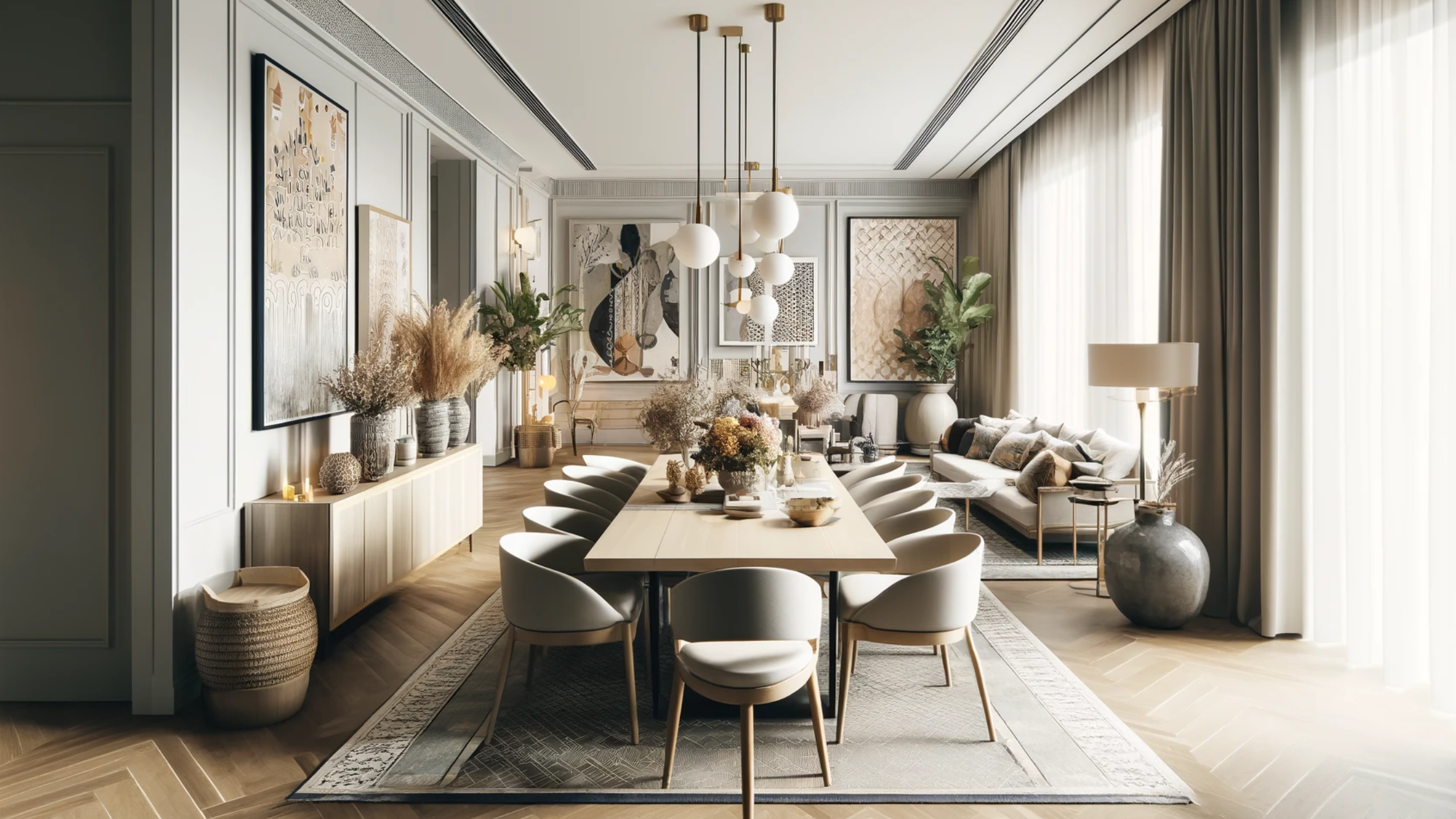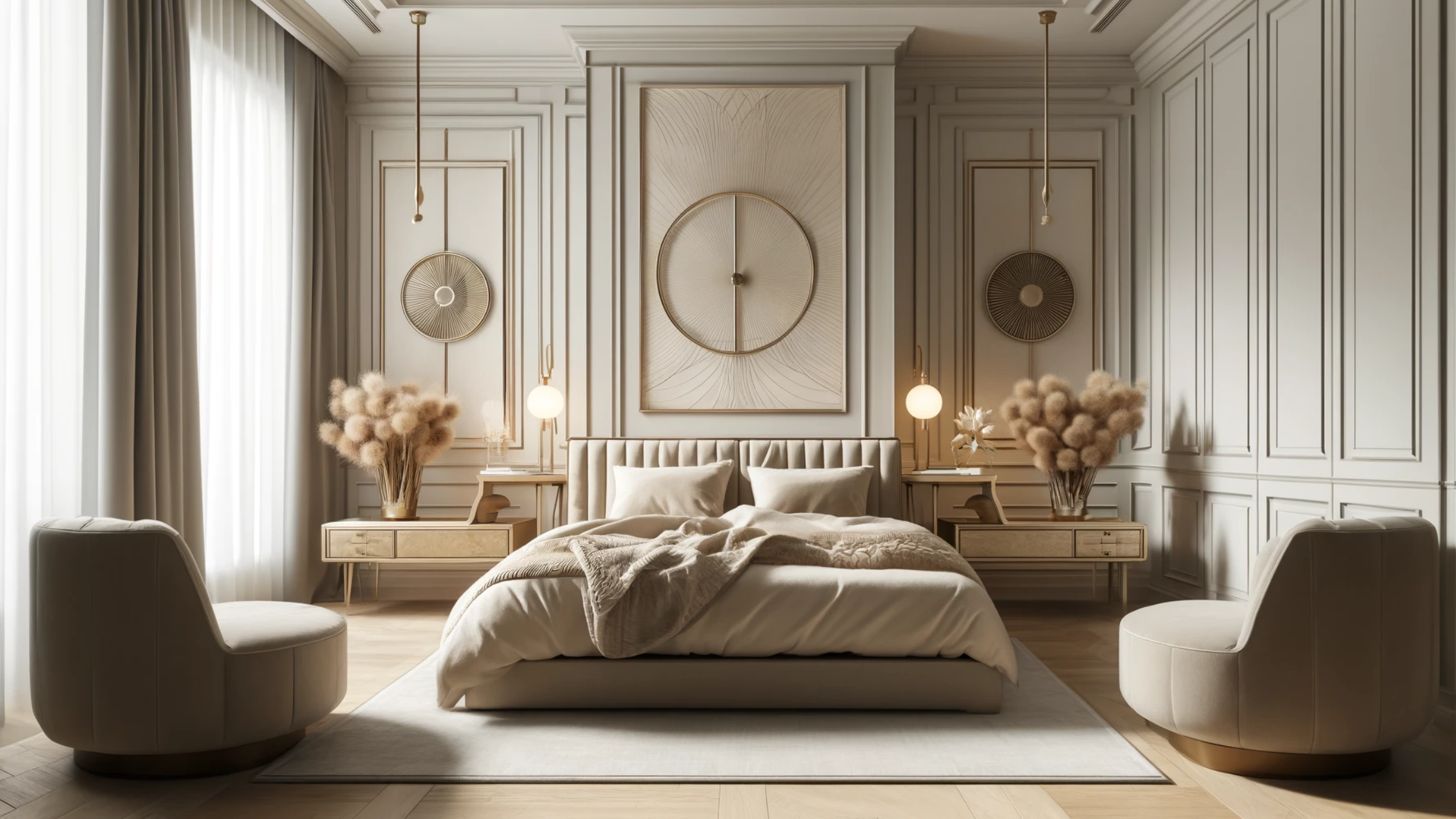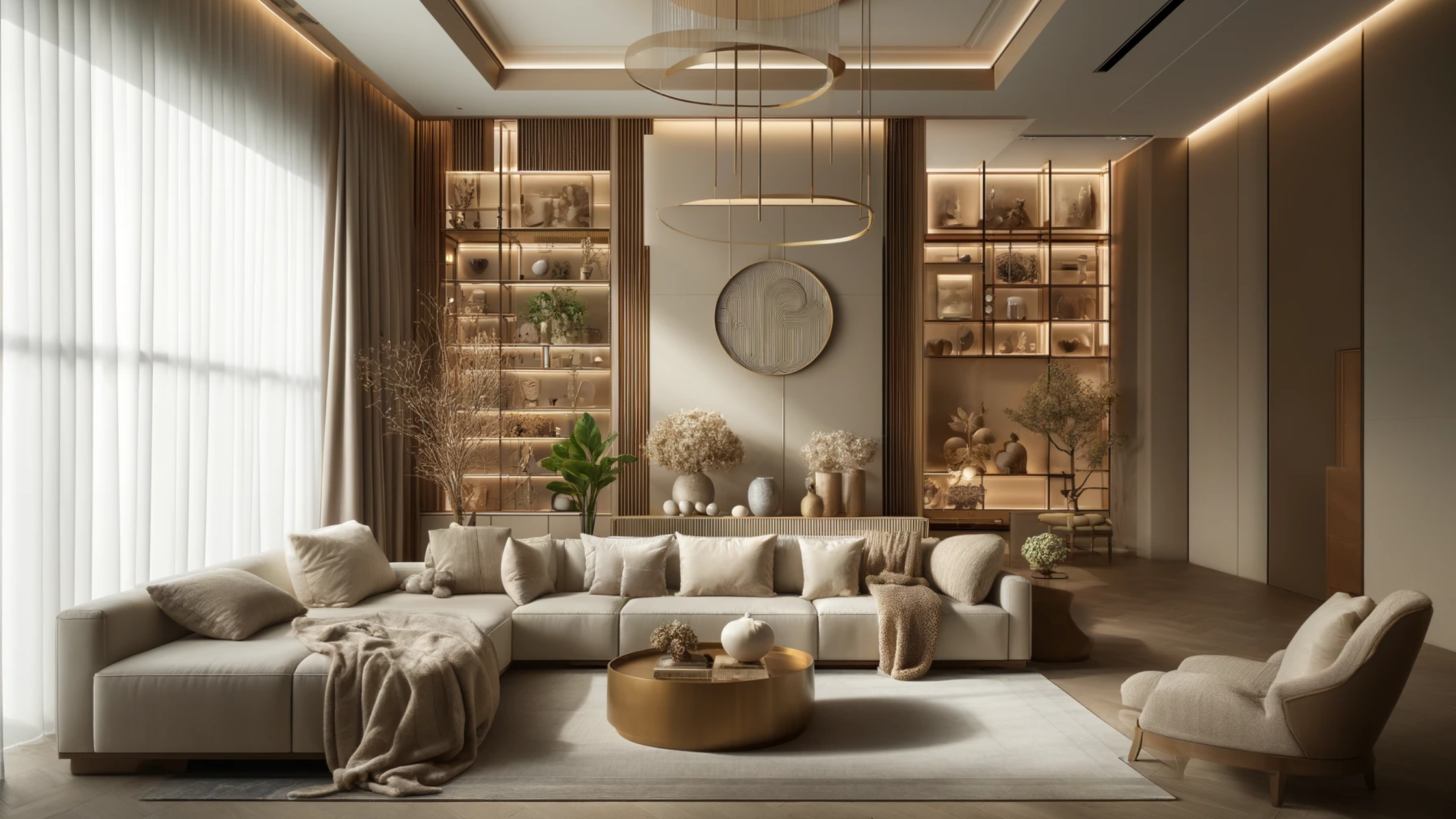
Maximalism and minimalism are usually terms thrown around casually in interior design circles. However, what do these terms actually mean and how do they affect our living spaces and the environments we wish to create?
What is Maximalism?
Maximalism is an idea that embraces the principle of ‘more is more’. It incorporates bigger and bolder design styles with a lot of patterns, textures and materials layered together, sometimes verging on overwhelming excess décor. However, it does not mean that maximalist design is necessarily gaudy or pretentious. When done right, maximalism can drastically improve your interiors.

What is Minimalism?
Minimalism is the opposite of maximalism in a way that it believes ‘less is more’. Minimalist design often prioritises functional interior design and strips down any excess décor. Elegance is usually associated with minimalist design as it uses limited and neutral colour schemes, materials and simple and spaced-out design. Sometimes, this type can also verge on ‘bland design’, but in this case as well, a careful balance is essential in every interior design.

Maximalism vs Minimalism: A Comparison
Use of Colour and Pattern
Maximalist interiors are characterised by a bold and eclectic use of colour and pattern. In such designs, colours are often rich, vibrant, and diverse, with an emphasis on creating a visually stimulating environment. Bright hues, jewel tones, and contrasting colour combinations are commonly used to evoke a sense of drama and excitement. Patterns play a crucial role in maximalist spaces, with mixing and layering of various patterns such as florals, geometric shapes, stripes, and animal prints.

On the other hand, minimalist interiors adopt a more restrained approach to colour and pattern. These designs favour a neutral colour palette, often featuring shades of white, beige, grey, and black. These neutral tones create a sense of calmness, simplicity, and spaciousness within the space. Rather than relying on bold colours, minimalism emphasises the use of subtle variations in tone and texture to add visual interest. Patterns are typically kept to a minimum or avoided altogether, with an emphasis on clean lines and uncluttered surfaces.

Visual Impact and Atmosphere
The visual impact of maximalist interiors is immediate and striking. Maximalist spaces are often characterised by an abundance of decorative elements, bold furnishings, and eye-catching accessories. The atmosphere of a maximalist space is vibrant, lively, and eclectic, reflecting the personality and interests of its inhabitants.

Minimalist interiors make a powerful visual impact through their simplicity and clarity of design. Minimalist spaces are defined by clean lines, uncluttered surfaces, and a sense of orderliness. The atmosphere of a minimalist space is calm, serene, and focused, encouraging a sense of mindfulness and introspection. The minimalist aesthetic promotes a sense of clarity and purpose, allowing for a deeper appreciation of the essential elements within the space.

Space Utilisation
In maximalist interiors, space utilisation can be a challenge due to the abundance of decorative elements and furnishings. However, maximalist design encourages creative solutions for maximising space while still maintaining a sense of visual richness and diversity. This might involve clever storage solutions such as built-in shelving, multifunctional furniture pieces like ottomans with hidden storage, or vertical organisation systems to make the most of available wall space.

Minimalist interiors excel in space utilisation by prioritising simplicity, functionality, and efficiency. Minimalist design favours clean lines and uncluttered spaces, allowing for a more streamlined and flexible layout. Furniture pieces in minimalist interiors are often carefully chosen for their practicality and ability to serve multiple functions.

Practicality and Livability
In a maximalist home, it’s essential to strike a balance between aesthetic appeal and practicality by selecting durable materials, comfortable furnishings, and functional layouts. This might involve investing in stain-resistant upholstery fabrics, durable flooring materials, or ergonomic furniture pieces that prioritise comfort without compromising on style.
Practicality and livability are inherent qualities of minimalist interiors, which prioritise function over ornamentation. Minimalist design focuses on creating spaces that are efficient, easy to maintain, and conducive to daily activities. Furniture and decor in minimalist interiors are chosen for their functionality and utility, with an emphasis on quality over quantity.
Balance between Form and Function
While maximalist design celebrates opulence and visual richness, it’s important to avoid overwhelming the space with excessive clutter or decorative elements. Instead, maximalist interiors can benefit from thoughtful curation and editing to create a harmonious balance between different design elements.

Minimalist design seeks to eliminate unnecessary ornamentation and focus on the essential elements that contribute to both the aesthetic and functional aspects of the space. By prioritising function over decoration, minimalist interiors achieve a harmonious balance between form and function that enhances the overall quality of life for occupants.

Interior Design Ideas Incorporating Maximalism and Minimalism
Incorporating Maximalist Elements in Minimalist Spaces
Accents and Accessories
Minimalist spaces can benefit from the addition of maximalist accents and accessories to inject personality and visual interest. This could include incorporating vibrant throw pillows, bold artwork, or intricately patterned rugs into an otherwise understated room.

Statement Furniture Pieces
Introducing one or two bold furniture pieces can instantly transform a minimalist space into a more dynamic and expressive environment. Opt for statement furniture pieces with intricate detailing, sculptural forms, or vibrant colours to serve as focal points within the room.

Incorporating Minimalist Elements in Maximalist Spaces
Streamlined Furnishings
In maximalist spaces, incorporating minimalist furnishings can help balance out the visual complexity and create moments of contrast. Choose sleek and simple furniture pieces with clean lines and minimal ornamentation to provide visual relief amidst the abundance of colours and patterns. For example, a minimalist dining table paired with ornate dining chairs can create a striking juxtaposition that adds sophistication to a maximalist dining room.

Negative Space
Embracing negative space is key to incorporating minimalist elements in maximalist interiors. Allow areas of uncluttered space to serve as visual pauses within the room, providing breathing room amidst the abundance of decorative elements. This could involve leaving walls bare or opting for minimalist shelving units to display curated collections of art or decor items.

Neutral Colour Palettes
Introducing neutral colour palettes can help tone down the intensity of maximalist interiors and create a sense of cohesion. Consider incorporating soft shades of white, beige, or grey as a backdrop to vibrant maximalist elements.

Mixing Styles for a Personalised Look
Mixing Furniture Styles
Experiment with mixing different furniture styles to create a personalized and eclectic look. Combining pieces from various design eras, such as mid-century modern, industrial, and bohemian, can add depth and character to a room. For example, pair a sleek modern sofa with vintage-inspired armchairs and a rustic wooden coffee table for a dynamic and inviting living space.

Layering Textures and Materials
Mixing textures and materials is another effective way to add visual interest and dimension to a space. Experiment with combining rough and smooth textures, natural and man-made materials, and matte and glossy finishes to create a multi-dimensional look.

Blending Colour Palettes
Harmonising colour palettes is essential when mixing styles to ensure a cohesive and balanced look. Whether it’s through accent pillows, rugs, artwork, or upholstery fabrics, repeating colours throughout the space helps create a sense of unity and cohesion. Additionally, consider incorporating pops of colour or unexpected accents to add personality and flair to the room, injecting a sense of individuality into the overall design.

Assessing priorities
When finding the right balance between maximalism and minimalism, it’s important to assess your priorities and preferences for your living space. Consider what aspects of each style resonate most with you, whether it’s the vibrant energy of maximalism or the serene simplicity of minimalism. By identifying your priorities, you can create a design scheme that aligns with your lifestyle, values, and aesthetic preferences.
The Perfect Blend
Interior design is all about striking the right balance. Incorporating maximalist elements into minimalist spaces and vice-verse are the best examples to depict thus balance.
In this space, while maintaining the neutral colour scheme and minimalist space optimisation, we have seamlessly incorporated maximalist elements in the form of wall hangings, chandeliers and pillow cases with popping colours.

For more ideas to elevate your personal or professional spaces, contact us and visit our website.
Frequently Asked Questions (FAQs)
What is maximalism and minimalism in interior design?
- Maximalism and minimalism are two distinct design styles that represent opposite ends of the spectrum.
- Maximalism is characterised by an abundance of colours, patterns, textures, and decorative elements, creating visually rich and eclectic spaces.
- In contrast, minimalism embraces simplicity, clean lines, and uncluttered spaces, focusing on essential elements and a pared-down aesthetic.
How do maximalism and minimalism differ in terms of aesthetics?
- Maximalism emphasises boldness, vibrancy, and visual complexity, with an eclectic mix of colours, patterns, and textures.
- Minimalism, on the other hand, favours simplicity, restraint, and clean lines, with a neutral colour palette and minimal ornamentation.
- Maximalist interiors tend to be vibrant and dynamic, while minimalist interiors are serene and understated.
Are maximalism and minimalism just about aesthetics, or do they reflect different lifestyles?
- While maximalism and minimalism are often associated with distinct aesthetics, they can also reflect different lifestyles and values.
- Maximalism may appeal to individuals who enjoy surrounding themselves with visual stimuli, embrace eclecticism, and express their personalities through decor. Minimalism, on the other hand, may resonate with those who prioritise simplicity, mindfulness, and a clutter-free environment.
Can maximalism and minimalism coexist in the same space?
- Yes, maximalism and minimalism can coexist in the same space through a concept known as “maximalist minimalism” or “minimalist maximalism.”
- This approach involves selectively incorporating elements from both styles to create a balanced and personalised interior.
- For example, a minimalist space may feature a few bold and eclectic accents, while a maximalist space may incorporate clean lines and uncluttered surfaces.
How do I know which style is right for me?
- Choosing between maximalism and minimalism ultimately depends on your personal preferences, lifestyle, and design goals.
- Consider factors such as your aesthetic tastes, comfort level with visual stimuli, and desired ambiance for your living space.
- You may also find inspiration by exploring examples of maximalist and minimalist interiors, experimenting with different elements, and observing how they resonate with you.
- Taking the help of interior design consultants will help you decide how you want to arrange your interiors.
Recent Posts
- Luxury Kitchens: The Perfect Balance of Aesthetics and Functionality
- Feature Walls: Adding Character to Your Interiors
- A Guide for Creating Cosy Interiors
- Ensuring Sustainability While Maintaining Luxury in Interior Design
- From Quartz to Velvet: A Guide to Interior Design Accessories and Exquisite Finishes
Recent Comments
Tags Cloud
Categories
- Architecture 28
- Experiences 7
- Home style 37
- Inspirations 13
- Interior 38
- Modern 28
- Others 3
- Reviews 3
- Tips 4
- Uncategorized 1
Search
CATEGORIES
- Architecture 28
- Experiences 7
- Home style 37
- Inspirations 13
- Interior 38
- Modern 28
- Others 3
- Reviews 3
- Tips 4
- Uncategorized 1










